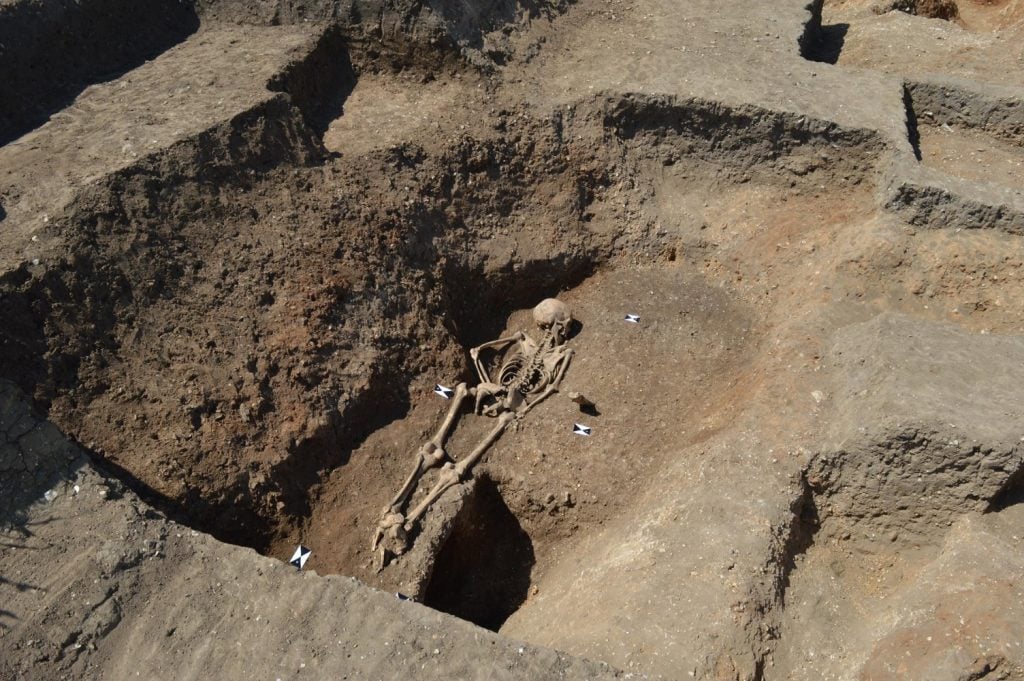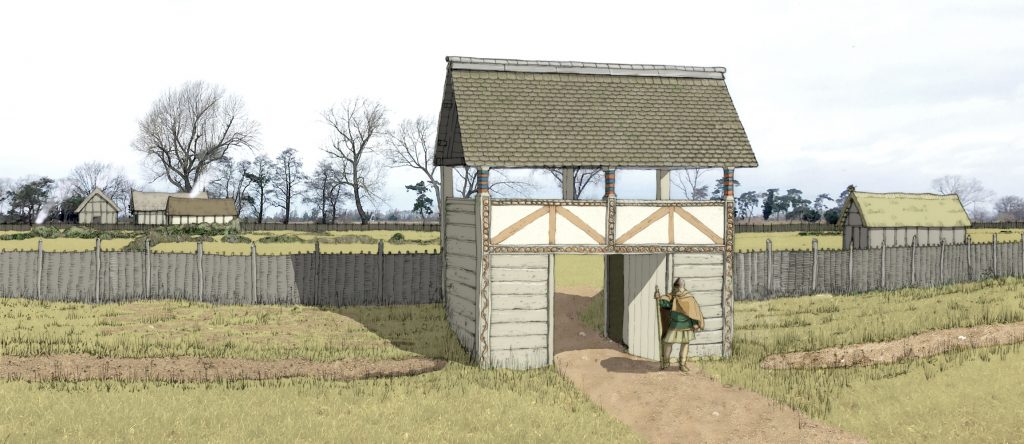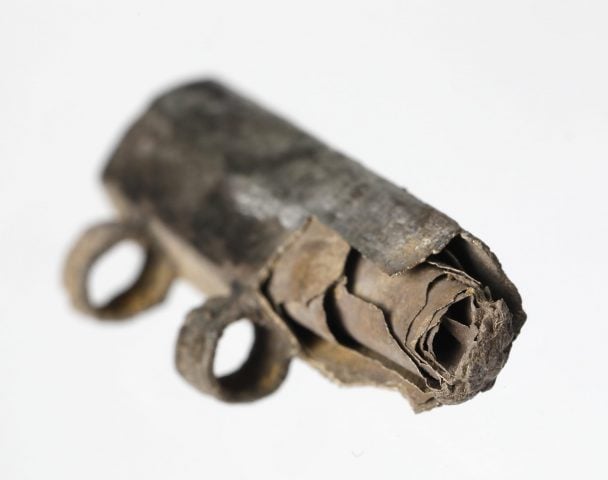Archaeologists working near Cambridge, England, have discovered the remains of a young girl who lived sometime during the 8th or 9th century. Unusually for the time, she was buried face down, a discovery that offers new insight into the treatment of those considered to be outsiders in Early Medieval England.
The girl, aged 15, was found during the excavation of a settlement that was abandoned by its community in the 9th century. It is believed that shortly before leaving, the enclosure’s elaborate entrance gate was dismantled and the girl was interred inside one of the deep pits left after the removal of a large wooden post.
Her remains were discovered face down while the position of her legs suggests that she may have been buried with her ankles tied together. These were not typical practices at the time. One other example of a face down burial has been recorded at the town of Higham Ferrers, about 30 miles away. This person had likely been executed, because they were missing their arms, head, neck, and fourth lumbar.

The Conington Burial. Photo: © MOLA Headland Infrastructure.
Experts believe that face down burials were reserved for members of the community that were deemed to be “other” in some way, whether due to social status, appearance, disability, or some other reason. This interpretation is supported by the belief that unusual burials were often relegated to the outer boundary of a settlement, as was also the case at Higham Ferrers.
A study of the girl’s bones reveals that her short life was likely very tough. She had malnutrition and spinal joint disease, likely worsened by hard manual labor. There is no evidence of prolonged illness, so the girl may have died suddenly.
“This burial provides an interesting, albeit tragic, opportunity to view the realities of life, and death, for those seen as outsiders in the past,” said Don Walker, a senior human osteologist who studied the skeleton. “We will probably never know exactly how this young woman was viewed by the community she grew up in, but the way she was buried tells us she was almost certainly seen as different.”
“As well as being buried face down on a boundary, the position of her ankles suggests they may have been tied together. This implies that the community took extra measures to ensure she could not ‘return’ from the grave.”
Similar motives were suggested when a Roman skeleton was unearthed face down in Northamptonshire in January 2017. At the time, Historic England’s human skeletal biologist Simon Mays told the Guardian, “The fact that he’s buried face down in the grave is consistent with somebody whose behavior marked them out as odd or threatening.”
“It’s a way of stopping the corpse from rising from its grave and menacing the living,” he added.
Located near the village of Conington in the county of Cambridgeshire, the settlement was excavated between 2016 and 2018 as part of wider effort to investigate all areas of archaeological interest that might be affected by the construction of a new 12 mile bypass known as the A14 Cambridge to Huntingdon improvement scheme.
Other significant items found in the 350 hectare designated area include 11 woolly mammoth tusks, 15 Iron Age and Roman settlements, and around 15,000 objects, including jewellery and coins. The dig, which was one of the largest and most complex ever to take place in the U.K., was carried out by MOLA-Headline Infrastructure. Their team of 30 experts are still in the process of recording and analyzing these remarkable finds.
More Trending Stories:
French Authorities Investigate Sale of Notre Dame Stained Glass by Sotheby’s After a Heritage Group Alleges It Was Stolen
John Baldessari’s Heirs Are Caught Up in a Tangle of Litigation Over the Care and Ownership of the Late Conceptual Artist’s Works
A Museum Loaned an Artist $72,000 to Make a Sculpture. Instead, He Delivered Two Empty Frames and Refuses to Return the Money
Albrecht Dürer Painted Himself Into a 16th-Century Altarpiece to Spite a Patron Who Paid Him Poorly, New Research Suggests
Two A.I. Models Set Out to Authenticate a Raphael Painting and Got Different Results, Casting Doubt on the Technology’s Future
Freud, Hockney, Pigeons, and Pubs. Step Inside the Eccentric New London Art Show Curated by Designer Jonathan Anderson










